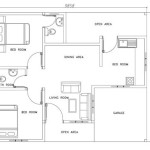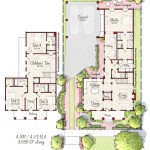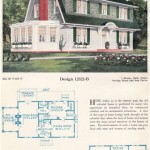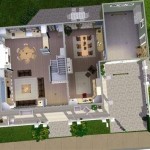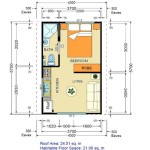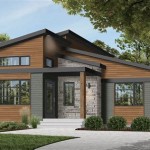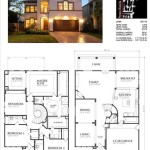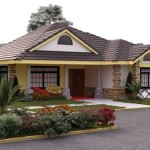Small Two-Story 4 Bedroom House Plans: Maximizing Space and Functionality
The demand for smaller, more efficient housing options is steadily increasing, driven by factors such as rising land costs, environmental concerns, and a shift towards simpler lifestyles. Small two-story 4 bedroom house plans offer a compelling solution for families or individuals seeking to maximize living space on a limited footprint. These designs prioritize vertical expansion, effectively doubling the square footage available compared to a single-story structure of equivalent size. This article will explore the key considerations and benefits associated with small two-story 4 bedroom house plans, highlighting the strategies employed to optimize space and functionality.
One of the primary advantages of a two-story layout is its ability to separate living areas from sleeping areas. Typically, the ground floor houses the common spaces—living room, kitchen, dining area—while the upper floor is dedicated to bedrooms and bathrooms, ensuring greater privacy and noise reduction for occupants. This segregation is particularly beneficial in households with children or individuals with varying schedules.
Selecting the right house plan involves careful consideration of various factors, including the size and shape of the lot, local building codes, personal preferences, and budget constraints. The availability of natural light, ventilation, and outdoor access should also be prioritized to create a comfortable and livable environment.
Optimizing Space in Small Two-Story 4 Bedroom House Plans
Designing a small two-story house with four bedrooms requires meticulous planning to make the most of every square foot. Several strategies can be employed to achieve this goal. Open-concept layouts are frequently used in the ground floor to create a sense of spaciousness and facilitate natural flow between the living, dining, and kitchen areas. By eliminating unnecessary walls, the visual connection between rooms is enhanced, making the overall space feel larger.
Strategic placement of windows and doors is crucial for maximizing natural light and ventilation. Large windows, skylights, and strategically positioned doors can brighten interior spaces and reduce the need for artificial lighting, contributing to energy efficiency. Consider the orientation of the house in relation to the sun to optimize solar gain in colder climates and minimize heat gain in warmer climates.
Storage solutions are paramount in small homes. Built-in shelves, cabinets, and under-stair storage can significantly increase the usable storage space without encroaching on the living area. Optimizing closet space with organizational systems such as shelves, drawers, and hanging rods is essential for maximizing storage capacity in bedrooms.
Multi-functional furniture can also play a significant role in optimizing space. Sofa beds, folding tables, and ottomans with hidden storage compartments can serve multiple purposes, reducing the need for additional furniture pieces. Using vertical space effectively is another key strategy. Tall cabinets, shelves that reach the ceiling, and loft storage can maximize storage potential without taking up valuable floor space.
Consider the use of pocket doors or sliding doors instead of traditional swing doors to save space and improve circulation. Pocket doors slide into the wall when open, eliminating the need for door swing clearance, which can be particularly beneficial in tight spaces such as hallways and bathrooms. The staircase design can also impact space efficiency. A compact staircase design with a smaller footprint is essential for maximizing usable area on both floors.
Furniture selection is also important. Choosing furniture that is proportional to the size of the rooms is crucial for maintaining a sense of balance and avoiding overcrowding. Opting for smaller pieces of furniture and avoiding bulky items can create a more open and airy feel.
Key Considerations for 4 Bedroom Layouts in Two-Story Homes
The layout of the four bedrooms in a small two-story house requires careful consideration to ensure privacy, functionality, and comfortable living conditions. Common configurations include having all four bedrooms on the upper floor, or distributing the bedrooms between the ground floor and upper floor, depending on the specific needs and preferences of the occupants.
When all four bedrooms are located on the upper floor, it is essential to ensure adequate sound insulation between the bedrooms and the living areas below. Using soundproofing materials in the floors and walls can help to minimize noise transmission and create a more peaceful sleeping environment. Consider the proximity of the bedrooms to the bathrooms to ensureสะดวก access and minimize disturbance to other occupants.
If one of the bedrooms is located on the ground floor, it can serve as a master suite, a guest room, or a home office, depending on the needs of the household. This configuration can provide greater privacy for the occupants of the ground floor bedroom and can be particularly beneficial for individuals with mobility issues. Ensure the ground floor bedroom has easy access to a bathroom and is located away from high-traffic areas to minimize disturbance.
Bedroom sizes should be carefully considered to ensure adequate space for furniture and comfortable movement. While maximizing space is essential in small homes, it's important to avoid making the bedrooms too small to be functional. Each bedroom should have enough space for a bed, a nightstand, a dresser, and a closet. Consider incorporating built-in closets to maximize storage space and minimize clutter.
Natural light and ventilation are crucial factors to consider when planning the layout of the bedrooms. Each bedroom should have at least one window to provide natural light and ventilation. Consider the placement of windows to maximize natural light while minimizing heat gain in warmer climates. Ensure adequate ventilation to promote air circulation and prevent moisture buildup.
Adequate storage is essential in all bedrooms. Built-in closets, shelves, and drawers can help to maximize storage space and minimize clutter. Consider incorporating organizational systems such as shelves, drawers, and hanging rods to optimize closet space. Provide ample storage space for clothing, shoes, and personal belongings.
Cost-Effective Design and Construction Techniques
Building a small two-story 4 bedroom house can be a cost-effective option compared to larger single-story homes, especially in areas with high land costs. However, careful planning and cost-effective design choices are essential for staying within budget. Simplifying the design, utilizing standard materials, and minimizing complex architectural features can help to reduce construction costs.
Choosing a simple and efficient floor plan can significantly reduce construction costs. Avoid complex shapes and intricate detailing, which can add to the cost of materials and labor. A rectangular or square floor plan is typically more cost-effective to build than a complex or irregular shape.
Utilizing standard building materials and finishes can help to reduce material costs. Opting for readily available materials and avoiding custom or specialty items can save money. Consider using cost-effective flooring options such as laminate, vinyl, or carpet. Choosing standard paint colors and finishes can also help to reduce costs.
Minimizing the use of complex architectural features such as vaulted ceilings, curved walls, and elaborate trim can also help to reduce construction costs. These features can add to the cost of materials and labor and may not be necessary for achieving a comfortable and functional living space. Focus on essential features and avoid unnecessary embellishments.
Consider the use of prefabricated or modular construction techniques to reduce construction time and costs. Prefabricated components are manufactured off-site and then assembled on the building site, which can significantly reduce construction time and labor costs. Modular construction involves building entire sections of the house inmodules off-site and then assembling them on the building site.
Energy-efficient design and construction techniques can also help to reduce long-term operating costs. Incorporating energy-efficient windows, insulation, and HVAC systems can lower energy bills and reduce the environmental impact of the house. Consider using solar panels or other renewable energy sources to generate electricity and reduce reliance on traditional energy sources.
Landscaping can also impact the overall cost of the project. Keeping the landscaping simple and using drought-tolerant plants can reduce water consumption and maintenance costs. Avoid elaborate landscaping features such as retaining walls, water features, and extensive lawns, which can add to the cost of the project.
In summary, small two-story 4 bedroom house plans offer an efficient approach to maximizing living space on a smaller footprint. Careful attention to space optimization, bedroom layout, and cost-effective design choices is paramount for achieving a functional, comfortable, and affordable home. By incorporating the strategies outlined in this article, homeowners can create a living space that meets their needs and preferences while staying within budget.

2 Story 4 Bedroom House Plans Tiny Floor Plan

4 Bedroom 2 Story House Floor Plans Elegant Two Home Designs Ideas

4 Bedroom Small Plot Home Design With Free Plan Kerala Plans House Layout

Small House Plans 7x8m With 4 Bedrooms Home Ideassearch Modern Design Model Plan

2 Story 4 Bedroom House Plans Tiny Floor Narrow Small Design

4 Bedrooms Home Design Plan 8x10m Samphoas Small House Exterior Model Construction

Gorgeous 2 Y House Concept With 4 Bedrooms Craftsman Plans Affordable Design

Small House Design 7m X 7 5m 2 Y 4 Bedrooms

Pin On Ev Planı

Rachel Lovely Four Bedroom Two Y Pinoy House Plans

